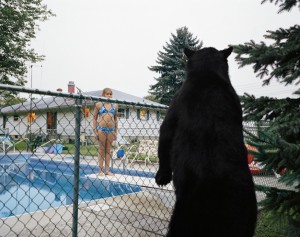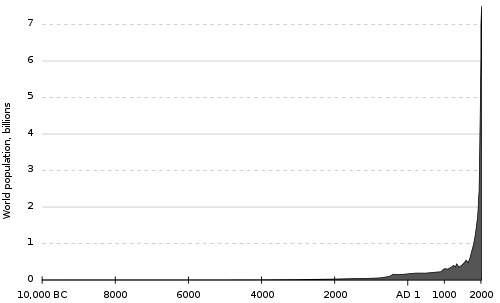Naming things, categorizing them and distinguishing them from each other is an essential human activity. It’s not an exclusively human thing, but I’m betting we’re the only ones that can categorize the same object in abstract, multiple ways and then discuss it. Categories/distinctions are a double-edged sword; they can illuminate and they can obscure. One of my least favorite distinctions is between ‘the human world’ and ‘the natural world’ – as if people can stand outside the systems that run the planet. We are just another variety of critter – an unusual and very successful one – but critters nonetheless.
*
Amy Stein’s Domesticated series looks at our efforts to enforce the human/natural split. I chose Watering Hole for this post because there are so many mutually reinforcing messages. There’s the vulnerable girl on the diving board. There’s the chain link fence that the girl’s folks put up to keep things out. And there’s the bear. In the Domesticated dioramas, Ms. Stein uses mounts from a taxidermist in Matamoras, Pennsylvania – the town where all the Domesticated scenes are set. Hunter’s (as opposed to museum) taxidermy mounts are often an attempt to freeze a moment and are also opportunity to manipulate that moment. The percentages are that the black bear was not standing when the hunter shot it but a standing mount is impressive and the taxidermist can make the bear appear to be curious, quiet or fierce. We can’t see the bear’s expression; we’re left to assign to the bear whatever expression we need, just as the taxidermist was free to to fit the bear to the hunter’s wishes. When we look across the categorical fence we’ve created at the ‘natural world’ on the other side we see what we want to see.
*
*
The talk that Ms. Stein and Stephen DeStefano gave at the Harvard Museum of Natural History was excellent (video above). Dr. DeStefano works with suburban and urban ecosystems: “You might be living in the biggest city in the world and you’re part of an ecosystem. You’re not separate from that, no matter how big the city.” At 23:30 or so Dr. DeStefano puts up a population slide that looks something like:
*
“A biologist that looks at this growth curve says, well that population is imminently going to crash.” It’s all connected and the rules apply to everything. The sooner we knock down that chain link fence and see ourselves as a part of the landscape, a part of the ecosystem, the better.


